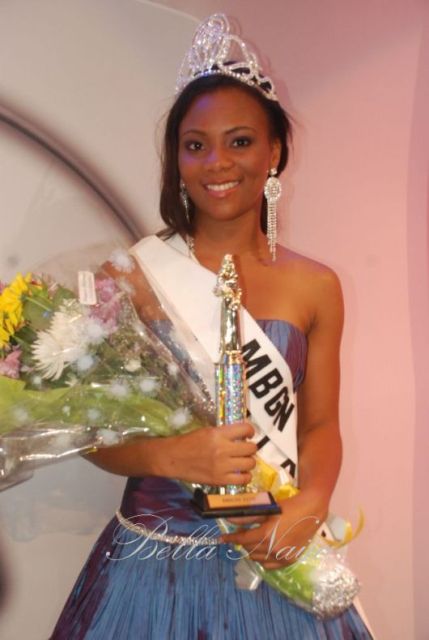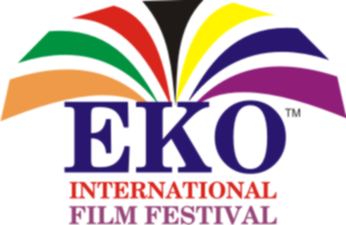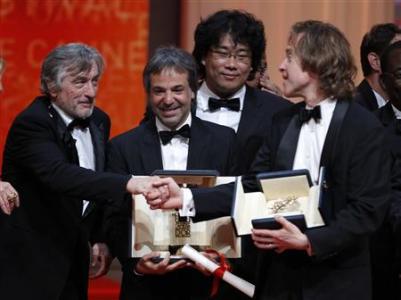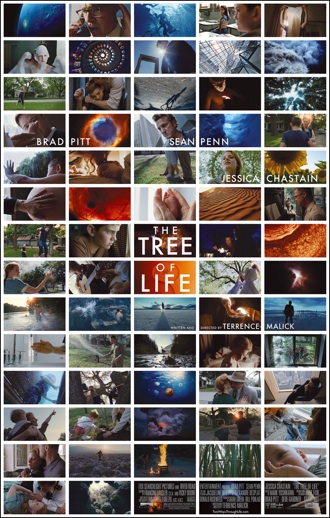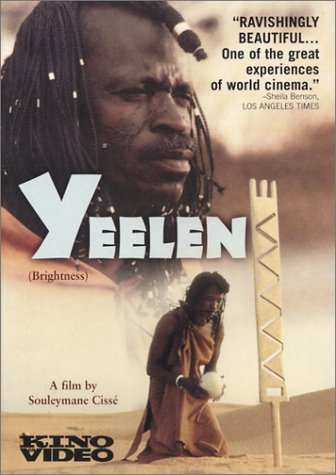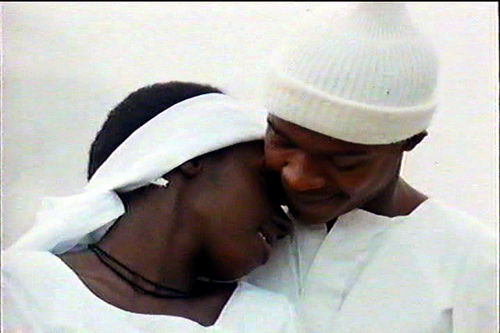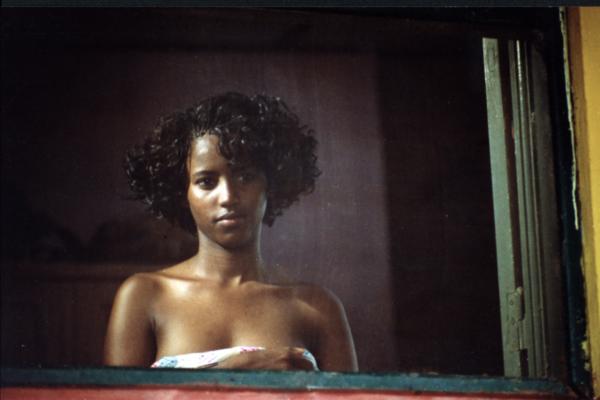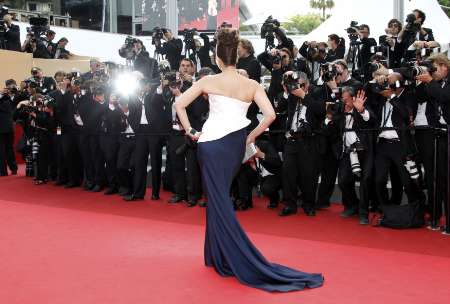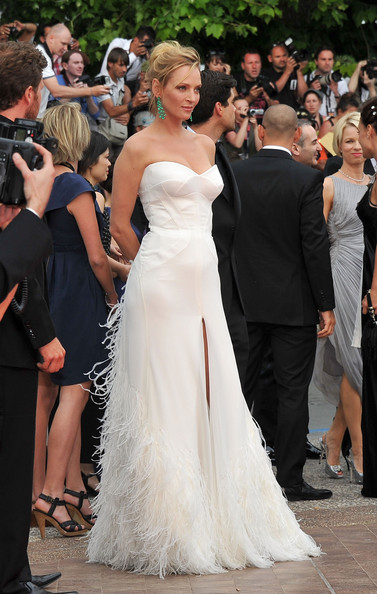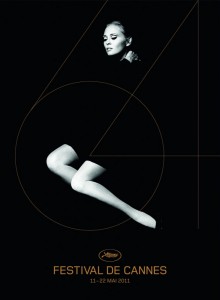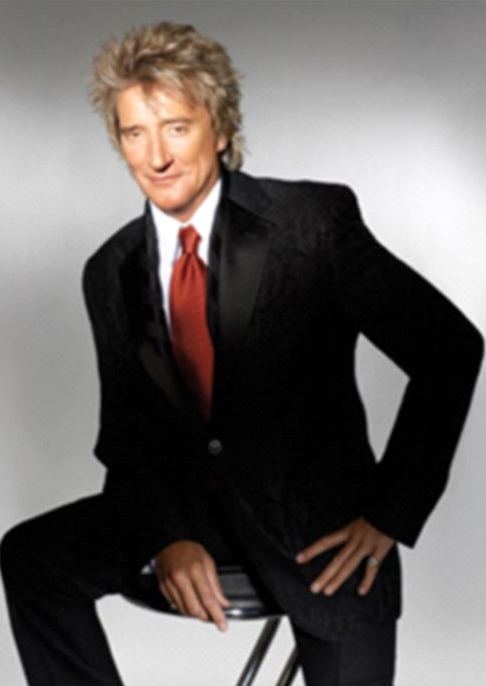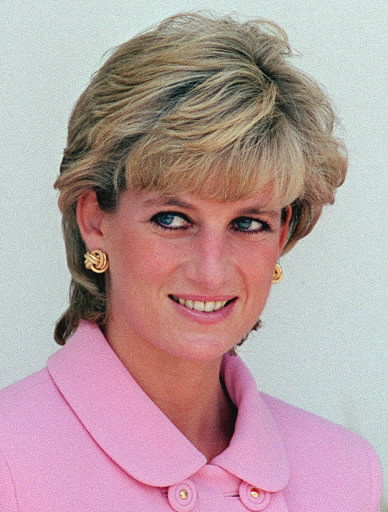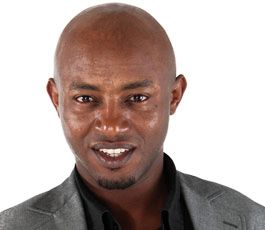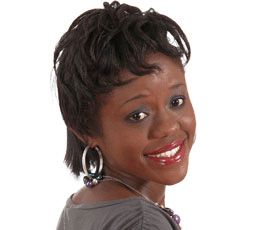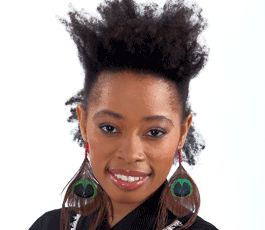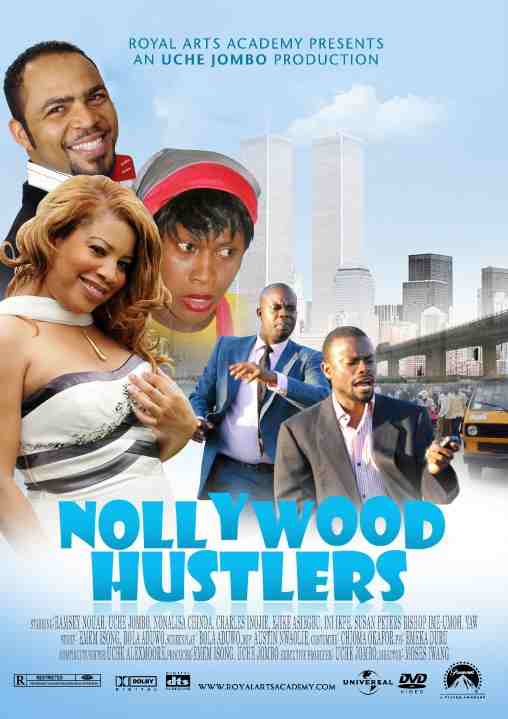
Nollywood: Reconstructing the Historical and Socio-Cultural Contexts of the Nigerian Video Film Industry
By
Professor Femi Okiremuette Shaka
Department of Theatre Arts
University of Port Harcourt
Port Harcourt, Nigeria.
Introduction: The theme of this year’s Nigerian Film Corporation’s (NFC) Annual Film Lecture is, “Nigeria’s Cultural Explosion through Film.” Working under this general thematic focus, I should like to title my lecture as follows: “Nollywood: Reconstructing the Historical and Socio-Cultural Contexts of the Nigerian Video Film Industry.” Evidently, the history of the Nigerian video film industry has been well documented by Jonathan Haynes, Onookome Okome and the contributors to the anthology edited by Jonathan Haynes entitled, Nigerian Video Films. There have also been other notable contributions by scholars like Abdalla Uba Adamu, Foluke Ogunleye and Femi Okiremuette Shaka, whose works have further shed light on the often taken for granted complexities of the omnibus film culture referred to as Nollywood. We are aware of the UNESCO rating of Nollywood as one of the big three film cultures in the world, alongside Hollywood and Bollywood. But we should also put on record that Leke Alder of Alder Consulting, has estimated that the total market potential of Nollywood is about N522 billion or $3 billion (Odugbemi, 2010, p. 46; Onoko, 2010, p.61). As a result of the already existing historical criticism of the industry, in this study, the emphasis is being placed on reconstructing the historical and socio-cultural contexts within which the industry emerged, the nature of Nigerian culture projected through the early video films that were released, and analysis of critical remarks on the products of the industry in terms of what the industry has done right or wrong and the way forward.
Nollywood: The Birth of a Brand Name and Film Culture.
Currently, in both local and international scholarship and popular entertainment arts criticism in the tabloids, the Nigerian video film industry is popularly referred to as Nollywood. The date of the birth of the brand name is situated in 2002, specifically in the pages of New York Times. The name itself is problematic in the sense that it attempts to essentialize and obliterate the different subcultures of videographic practices that are collectively referred to as Nollywood. There is also the question of who invented the brand name. For a while, Jonathan Haynes had thought it was Matt Steinglass in an article he wrote for the New York Times in 2002 (Haynes, 2007, p.106). But we now know that the inventor of the brand name is actually a Japanese American going by the name Norimitsu Onishi, in an article he wrote for the New York Times in 2002, entitled “Step Aside, Los Angeles, Bombay for Nollywood,” culled and published in The Guardian (Nigeria) on Thursday, October 3, 2002. In that article, Onishi states:
Since the late 1990s, Nigerian movies have found a place next to offerings from Hollywood and Bollywood, Bombay’s equivalent, in the cities, towns and villages across English-speaking Africa. Though made on the cheap, with budgets of about only $15,000, Nigerian movies have become huge hits, with stories, themes and faces familiar to other Africans. It is now, according to conservative estimates, a $45 million a year industry (Onishi, 2002, p.53).
On the issue of the person who invented the brand name, Matt Steinglass himself seems to deny the fact that he was the first person to employ the acknowledgeably creative brand name when he submits:
Having written one of those NY Times stories, I’d like to respond. First, to coin the term “Nollywood” (which I did not use; that was the other story) does not imply that the production and distribution system in Nigeria is the same as that of Hollywood; Bollywood, afterall, also has a different production and distribution system from Hollywood, and in any case the Hollywood system is itself in a state of flux, and scarcely resembles the classic studio system of the 40s (Steinglass, 2002, p.53).
The debate on who coined the brand name, Nollywood, has been further complicated by Olushola Oladele Adenugba who has maintained that “Nick Moran, a BBC reporter, who was in Nigeria to do a documentary on the ‘get-rich-quick-video’ came up with it” (Adenugba, 2007, p.2). In the light of this claim, it would seem that the originator of the brand name could be traced to either Nomiritsu Onishi or Nick Moran of the BBC, depending on who first used the term. This is an issue that needs to be further researched to lay to rest the question of who invented the brand name. In a recent exchange between us, Haynes and I have agreed that Matt Steinglass did not coin the term, Nollywood. But irrespective of who coined the name, commentaries on its emergence have been full of ambivalences. Some art critics like Olushola Oladele Adenugba, have come to accept the term because it covers the diversity of Nigerian films, whether they are “celluloid, video, short film, documentaries, film literatures, training projects, equipment and capacity building of the industry and its highly secretive professionals.” According to Adenugba, the term covers the diversity of Nigerian film production in the same way that Bollywood covers the production of Indian films in Tamil, Bengali, Telegu and other languages besides Hindi, in other parts of that huge country: “Nollywood covers Nigerian films in Yoruba, Igbo, Hausa and English, although it is speculated that the Hausa filmmakers are trying to separate themselves by adopting the terms ‘Kaniwood’ and ‘Kallywood’” (Adenugba, 2007, p.1).
The Emmy Awards nominated American Director of Photography, Marc Wishengrad, who was one of the resource persons invited for the annual Nigerian Film Corporation’s Cinematography Workshop, tagged “SHOOT 2005,” was downrightly paternalistic in his objections to the brand name “Nollywood,” possibly because the term seemed to bring the Nigerian film industry to the same rankage with its American counterpart, Hollywood. This is my personal interpretation to his paternalistic outburst against the term. His argument is that the name Hollywood sterms from a town in the United States of America known for film production. In this respect, he opines that
It would be stupid against this background to refer to your local film industry as Nollywood. It would be more understanding if it is called Lagos, because I understand that is the nerve centre of film production in Nigeria, but not Nollywood. New York, where I come from, has its own film industry, it is not referred to as Hollywood (as cited in Akpovi-Esade, 2005, p.66).
Marc Wishengrad was equally unsparing with respect to his assessment of the reputed claims to popularity of the Nigeria video film industry. According to him, “an average American does not give a damn about Nigerian movies. They don’t watch you movies and that is the truth.” He was however not charitable enough to qualify whether by “average American” he was referring to an average caucasian American or whether he was speaking for all Americans. He was however definitive or why only the African community in the United States of America watch Nigerian films: “because of the heavily accented English of Nigerians, no American will understand what actors are saying, and nobody enjoys any movie when he has to strain his ears to hear what the actors are saying” (as cited in Akpovi-Esade, p.66).
Marc Wishengrad’s remarks, as earlier noted, smacks of paternalism and ignorance because the fact that Hollywood derived its name from a town on the outskirts of Los Angeles where the major film production studios are located does not mean that all brand names used in describing film cultures must similarly be derived, like that of the United States of America, from the name of a town. Also, the fact that he claimed he was informed that Lagos is the nerve centre of Nollywood tells us how ignorant he was about the industry. Let me hasten to state categorically that I’m one of those who would readily approve of critical comments on the Nigerian film industry from scholars and practitioners from anywhere in the world so long as such critical commentaries are made from a position of a well-informed knowledge of the industry, and that they are not tainted by derogatory paternalism.
From the nationalistic perspective, Olushola Oladele Adenugba has provided the following reasons why some Nigerians object to the term, Nollywood:
One of such reactions states that the term implies that Nollywood is an imitation of Hollywood and Bollywood rather than something in itself, something original and uniquely African. Many are opposed to the appellation because, according to them, it is a form of neo-colonialization, another Western propaganda. They wonder why the only film culture that has built itself by itself must be labeled after Hollywood (Adenugba, p.1).
The first film scholar to intervene in the controversies surrounding the name “Nollywood” was Jonathan Haynes, in his article entitled, “Hollywood”: What’s in a Name?” Haynes, in my opinion, gives us enough reasons why people need not split theirs hairs over the issue of the brand name, Nollywood: “I’m an American, and my continent is named after Amerigo Vespucci, a fifteenth-century Italian of no particular importance. He bumped into Brazil and then probably lied about it when he did it” (Haynes, 2005, p.1). If we worry so much about the name, Nollywood, we may just as well dump the name “Nigeria,” which Haynes reminds us was coined by Lord Lugard’s mistress. In this regard, I have used the term “Nollywood” throughout this work to represent the totality of film productions which are thematically and linguistically rooted in Nigeria’s belief systems and socio-cultural ambience, in which the stories may roam about from Nigeria to elsewhere in the world, back and forth, representing and showcasing the stoic and proud Nigerian national character and psyche, in all its hybrid forms, and whether such works were produced solely by Nigerian filmmakers or through co-productions. This definition is very much in tandem with the conception of Adenugba who uses the term to cover the diversity of Nigerian film production, whether they are in the video format or in the celluloid format. The term is certainly a handy one in referring to the popular film culture which has emerged in Nigeria since 1992.
Reconstructing the Socio-historical and Cultural Contexts of Nollywood.
The story of the factors that led filmmakers to start experimenting with the video medium as means of film production in the place of celluloid is too well documented to warrant any detailed mention here. In brief, we know that after the International Monetary Funds (IMF) and World Bank prevailed on the military government of President Ibrahim Babaginda, the Nigerian Naira was massively devalued, the argument being that it would make our manufactured goods cheaper at the international market, thereby driving expansion of our manufacturing base, increasing our exports and providing employment for the teeming unemployed youths. Of course, many patriotic Nigerians knew that the country was not manufacturing anything, they also knew that the World Bank and IMF forced devaluation of the Naira was intended to hoodwink us, and tailor our economy into an import substitution economy, totally dependent on importation of raw materials from the industrialized countries for the production of goods. The immediate effect of the devaluation of the Naira on the film production sector of the economy was that it brought to a dramatic end, the production of films using the celluloid format. In the 1980s this sector had witnessed a tremendous growth thanks to the efforts of filmmakers like Ola Balogun, Eddie Ugbomah, Sanya Dosunmu, Ladi Ladebo, Brendan Shehu, Hubert Ugunde, Adamu Halilu, Afolabi Adesanya, and others. The devaluation brought the growth of the sector to a halt because as an import substitution based industry, filmmakers could not get enough foreign currency to buy raw stock, hire equipment and technical staff and so on. This all too well known history is not what I intend to do in this section. Rather, I intend to reconstruct the socio-historical and cultural ambience which formed the basis for the production of the video films which replaced film production in the celluloid format. My interest in focusing on the production context of the video films is driven by the desire to account for the nature of Nigerian culture projected by certain genres which predominated the industry in the early years of its emergence.
Over the years, Nigerian art, literature and film have offered us a great insight into the socio-political and cultural traumas that Nigerians are passing through. Works such as Wolo Soyinka’s The Man Died, Season of Anomy and The Interpreters; Chinua Achebe’s Things Fall Apart, No Longer At Ease and Anthills of the Savannah; Christopher Okigbo’s Labyrinth; Isidore Okpewho’s The Last Duty; Festus Iyayi’s Violence, Heroes and Victims; Femi Osofisan’s Kolera Koleg and Once Upon Four Four Robbers; Ola Rotimi’s The Gods Are Not to Blame, If… and Hope of the Living Dead; I.N.C. Aniebo’s Anonymity of Sacrifice; J.P. Clark-Bekederemo’s The Raft and Wives Revolt; Tunde Fatunde’s No More Oil Boom; Ben Okri’s The Landscapes Within and The Famished Road; Chimamada Ngozi Adiche’s Half of a Yellow Sun; Helon Habila’s Oil on Water; and works by so many other Nigerian writers, have helped to chronicle the social traumas caused by bad leadership in our country.
As an art form, the film medium, like our literature, have historically documented the social mentality, fears and desires of the Nigerian society through the works of our major filmmakers. Ola Balogun’s works such as Amadi, Cry Freedom, Money Power; Sanya Dosumu’s Dinner with the Devil; Jab Adu’s Bisi, Daughter of the River; the critical realist films of Eddie Ugbomah such as The Rise and Fall of Dr. Oyenusi, The Mask, Oil Doom, Vengeance of the Cult, Death of a Black President; Ade Folayan’s Mosebolatan/Hopelessness, directed for Moses Olaiya Adejumo’s Alawada Movies; Wole Soyinka’s Blues for a Prodigal; Ladi Ladebo’s Vendor, all have chronicled the social anxieties of Nigerians in the age and time of their productions. So, essentially what one has tried to do in this work is provide the socio-political and cultural contexts within which Nigerian video films emerged on the entertainment scene. Excavating the production contexts of the video films will provide us a handle into the social anxieties and fears which predominated in the Nigerian society of the 1990s and into the first decade of the twenty-first century. It will also help to shed light on the peculiar aspects of Nigeria culture which have been projected through the video films.
If it is true that Nigerian literary writers did not write in a vacuum, and if there is an agreement that their literary works provided us a barometer for understanding how our society was organized and led by politicians of all colourations, be they people in military uniforms or civilians at a particular historical epoch, then the same can equally be said of our filmmakers whose works mirrored the crisis ridden Nigerian society of the 1990s. In his analysis of the social history which is reflected in contemporary Nigerian fiction of the same period, Charles Nnolim has the following to say regarding the temperament of the age:
It is, therefore, the position of this study that contemporary Nigerian fiction depicts a society adrift and a people lost in the imbecilities of futile optimism, hoping that materialism and the pursuit of dirty lucre will compensate for the loss of the nation’s soul; for the Nigeria we encounter in its contemporary fiction is a nation without a soul, without direction, without a national ethos – it is a rudderless ship a-sail amidst the jetsam and floatsam of a directionless voyage to nowhere (Nnolim, 2009, p.230).
Without doubt, Nigeria of the 1990s fits smugly into the above inimitable characterization by Charles Nnolim. It was a period in which the ship of state was set adrift by political experimentations that were intended to sail to a dead end. The political experimentations started with the military President, Ibrahim Badamasi Babangida, who founded political parties for the state, Social Democratic Party (SDP) and National Republican Convention (NRC). When the experiment produced his bosom friend, M.K.O. Abiola, as the democratically elected president, President Babangida refused to hand over power to Abiola until a mass uprising by the people forced him to step aside. As a stop gap to douse the mass uprising, the Interim Government of Earnest Shonekan was inaugurated. It hardly stayed upto a year before it was toppled by General Sani Abacha who instituted a reign of terror in the country which led to the killing of several journalists thereby driving a portion of the Nigerian press underground and equally resulted in the formation of the pro-democracy coalition, the National Democratic Coalition (NADECO) headed by the late veteran politician, Anthony Enahoro. These were dark days in Nigeria’s social history. Many journalists, scholars and pro-democracy activists went on voluntary exile. The nation was cowed and General Abacha set about the crudest form of public looting of the national treasury that has not been witnessed in recent history in Nigeria, and he did it with impurity. The mass of the population was mired in poverty and hunger. Many families experienced broken homes. The people became so poor that stories of cannibalism surfaced in the Nigerian press, especially with relation to the “Otokoto” saga in Owerri, Imo State. This period also witnessed the mass exodus of Nigerian girls to Italy and other European countries, especially girls from Edo State, for prostitution, to support their poor families back in Nigeria. The tabloids of the period were also awash with stories of ritual killings, harvesting of body parts for monetary charms. The cities of Lagos and Warri were notorious for such ritual killings in the 1990s. It was in the midst of this political and economic quagmire that Ken Saro Wiwa began his grassroot movement, the Movement for the Survival and Emancipation of the Ogoni People (MOSOP) in which collaborators with the Abacha regime were characterized as vultures by the mass uprising in Ogoniland. In the midst of this social upheaval, popular culture in the form of yellow journalism, and poster/calendar production flourished, with many pictures of collaborators being beaten who then turn to vultures and fly away. I remember arguing with an aunty who hung such a poster-calendar on her wall who swore she bought it from an Onitsha trader who himself swore he witnessed such an event in which thieves or political collaborators turned into vultures and flew to avoid instant justice by the poverty ridden Nigerian masses. There is need to reconstruct this social history so that we don’t fall into the trap of misjudging harshly the popular video film culture which exploited the social nightmares which Nigerians were facing in the 1990s. In fiction, these social nightmares were properly characterized through the generic format of magical realism in Ben Okri’s novel, The Famished Road. It is only through a proper reconstruction of Nigeria’s social history of the 1990s that will place Nollywood video film culture in its proper production context thereby avoiding the type of quasi-historical comments which we are subjected to by armchair critics on the pages of many Nigerian tabloids.
In view of the social upheavals and economic depression experienced by the populace, one would have expected that the emergent video films would reflect the turbulent social history that the country was going through. Ironically, this was not the case. The bad leadership and corruption which had brought about mass poverty in the society and which had been well accounted for in Nigerian prose fiction, drama and film production in the celluloid format were absent in the new video film culture. The question to pose at this point is this: were the filmmakers in the video format blinded to the mass poverty and suffering in the land? Absolutely not. It seems to me that rather than bore the populace with the tales of woes in the land, they decided to sell what Charles Nnolim has characterized as the “imbecilities of futile optimism, hoping that materialism and the pursuit of dirty lucre will compensate for the loss of the nation’s soul” (Nnolim, p.230). In the age mass poverty and desperation, the people seemed to search for financial redemption by any means necessary, to paraphrase Malcolm X. The invention of the video format as a medium of film production was in itself an act of desperation for survival by the predominantly Yoruba Travelling Theatre practitioners who in the preceding decade had successfully transferred their productions from the stage to the silver screen. By the early 1990s, their means of livelihood had been cut short by the ill-advised devaluation of the Naira. Those who wanted to experiment with soap operas were equally being checkmated by the mass importation of Mexican soaps. Faced with the prospect of a financial ruin, the artists started experimenting with the video format as a medium of film production.
On their part, the people also needed some form of escape entertainment that will make them forget, even if momentarily, the mass poverty and sufferings in the land. They also needed their own fantasy route to financial and social liberation. It was therefore easy to anchor such a dream in the macabre stories of ritual killings for monetary charms which we read about daily in the soft sell Nigerian tabloids. In fact these were the days in which rumours sold like wild fire. Newspapers carried banner headlines without substantial content to back them up, and the more lurid the stories, the more free readers and potential buyers of newspapers clustered around a vendor. In the midst of this social hysteria, it is therefore understandable that films of the ritual murder genre kick started the commercial phase of the video film industry with Kenneth Nnebue’s blockbuster, Living in Bondage (1992).
Apart from ritual killings for monetary charms, which, by the way, our sociologists and anthropologists, are yet to fully investigate, the next perceived source of quick financial reward was prostitution. Newspapers in the late 1980s and early 1990s were awash with stories of Nigerian girls migrating to Italy for prostitution. In an age of mass poverty in the land, escape to Europe, by any means, was a glamorous adventure which many girls were prepared to undertake. This adventure seemed to attract new recruits regularly, especially with stories making the round that many of the flashy cars and buildings springing up in Benin City in the early 1990s were products of repatriated funds by the migrant girls. It is therefore easy to understand why works such as Glamour Girls and Italian Connection became video hits when they were released. In her article entitled, “Appearing Fabu-lous: From Tender Romance to Horrifying Sex,” Frances Harding explains the reason why narratives woven around sex sold the way the way they did:
Video movies focus on sex as a vehicle and strategy for bringing about economic change in an individual’s life. As far as the narrative goes, representing illicit sex with one or more partners is not the end in itself, rather it is the exposure of the acquisition, by any means, of wealth and power that is the motive for the ensuing sexual and violent acts suggested in the video. The agency for change is the putative efficacious relationship between transgressive sex and a consequent supernatural power to bring about a specific result: the acquisition of wealth and/or power (Harding, 2007, p.11).
Incidentally, most of the stories that sold during the early years of Nollywood, were tales exploiting the themes of transgressive sex and violence, by means of which the patriarchal hold of the family is reasserted and the female gender is subjected to personal sacrifices to ensure the survival of the family. Whether through acts of self-sacrifices such as prostitution or in terms of gender violence directed mostly at women as objects of ritual sacrifices, the endgame is to empower man as the source of power and authority in the African family set up. Thus in video films like Living in Bondage I & II, Circle of Doom I & II, Glamour Girls I & II, Taboo I & II, Jezebel I & II, Evil Passion I & II, Nneka: The Pretty Serpent I & II, Rattle Snake I & II, Fatal Desire, and many others, the issue of transgressive sex and violence is marketed as fast and alternative routes to wealth and power, irrespective of the moral opprobrium they attracted. Another important issue which Frances Harding mentions as the source material for Nollywood narratives is “the articulation of the fear of the imagined,” which is represented through stories founded or ritual murders:
the use of sex as the driving narrative engine and which overarches the whole enterprise, is the articulation of fear of the imagined, of the semi-known: the putative disappearance of individuals, the putative availability of limbs, sexual body parts, heads, for esoteric putatively supernatural ritual directed towards the acquisition of wealth and sexual prowess. Evidenced in visual, material features such as dress, cars, housing, furnishings, social behaviour, such manifestations are part of the daily gossip of real people (Harding, p.14).
However one wants to look at it, the problem of ritual killing for supernatural acquisition of wealth and power was in vogue at the time the video films were preoccupied with this thematic issue. Ritual killing is also a subject that instills fear and anxiety in the populace. In this respect, the films were merely exploiting an aspect of our social history, however obnoxious it may seen, which provokes fear and anxiety in the society. I should like to equally add that the issue of ritual sacrifices of human beings for purposes of propitiation of angry deities, gods and goddesses or as part of burial rites of kings or powerful warriors has been an obnoxious practice in traditional African societies. Its modern practice for supernatural acquisition of wealth, prestige and power is, I presume, part of the mutation of this obnoxious practice in the age in which the brute strength of power has been replaced by the power of the intellect, in a modern economic system driven by money, wealth and power. No doubt, the problem of ritual killing is a law and order problem which deserves proper investigation by the law enforcement agencies so that our judicial system can be in a position to tackle it. It equally needs proper investigation by scholars in Social Anthropology and Sociology to enable us to fully understand the rational and irrational forces sustaining the practice.
Most of the criticisms which Nollywood faces in the Nigerian press can be traced to films of the ritual genre. In his article entitled, “Love, Love Everywhere in Moviedom,” in which he attempts to trace the advent of genres in Nollywood, Justin Akpovi-Esade, in October 16, 2003, has reported how the offensive odour of films dealing with the theme of ritual killings became so unbearable to the delicate nostrils of officials of the National Films and Video Censors Board (NFVCB), that they had to intervene by bringing down the hammer of censorship hard on them due to an incidence in Accra, Ghana, where some Nigerians were reported murdered because the Ghanaians attributed the ritual killing of a little girl in the city of Accra to Nigerians because many Nollywood films have represented it as an aspect of our social practice. Permit me to quote this article at some length because it brings forcefully home the power of the film industry and the ambivalent reactions which could attend a filmmaker’s altruistic representation of his culture:
When Living in Bondage produced by Kenneth Nnebue came into the market, its success led other producers to come out with works that had identical story lines… Vulture, Rituals among other films celebrated rituals and the act of making money through dubious means that includes using human being for money-making rituals. It got to alarming degree, drawing concerns from all quarters including the federal government. The National Film and Video Censors Board (NFVCB) had to step in when some Nigerians were murdered in a mob action in Accra, Ghana in the late 90s. Offence: Nigerians were accused of being responsible for the death of a little girl that had her head severed after she was murdered, presumably for ritual purposes. The conclusion reached by the angry Ghanaians was that Nigerians being ritualists as portrayed in our home videos, must have been responsible for the death! (Akpovi-Esade, 2003, p.66).
Evidently, this is a clear case where the artistic representation of life has been mistaken for reality. The point should be emphasized that no matter how closely art is said to represent life, art remains an imitation of life and should not be mistaken for life itself. But the events reported by Justin Akpovi-Esade brings home the message that many of the issues which literary writers may exploit and get away with, the filmmaker has to handle with great subtlety and circumspect because of the long lasting impressions or the visual power of the film medium. Its visual power is part of the reasons why dictators over the ages have dreaded the medium. As many Nigerians are becoming well aware, the popularity which Nollywood has bestowed on us internationally comes with a lot of responsibilities. Many people around the world mistake the fictional representation of aspects of our culture to be the same with our culture. The issue of this responsibility was very much in the mind of Femi Osofisan when he submits that Precisely because they have deservedly won ovation everywhere, Nollywood films have come to assume an authority over our values and our lives, such that what people see in them comes to be taken not as just a fictional projection by one imaginative consciousness, but as the true, authentic mirror of the what we really are, as a veritable marker of what our society represents, and much worse, of the ideal that we aspire, or must aspire, towards (Osofisan, 2006, p.30).
Though, in general, Femi Osofisan’s main concern in the essay in question is on the need to enrich the content of Nollywood films, the vexatious issue of films of the ritual genre was not far from his mind as the following remarks show:
I will not, as you know, be the first to make this complaint. Even our friends outside have voiced the same unease about the ambiguity of Nollywood. The common question that people ask, as you know, is – why this unceasing preoccupation with juju, this relentless celebration of dark rituals and diabolical cults? Practically every Nollywood directors seems to have been caught in the spell – mix a diet of grotesque murders and cacophonous chants and bizarre incantations, and smile all the way to your bank! (Osofisan, p.30).
Admittedly, there is much to be vexatious about in films of the ritual genre which feed us a constant diet of ritual killings for supernatural acquisition of wealth and power, and which highlights an aspect of our culture we would not want the rest of the world to know about. These film evidently portray us as superstitious people trapped in the web of traditional African belief-systems in the age of modernity when the instrumental power of rational reasoning should prevail. They no doubt make us uncomfortable like the proverbial psychoanalytic return of the repressed which continue to torment us however hard we try to banish them to the subconscious realm. As self-professed moderns, we may hate the mumble jumble of the native doctor and his monotonous chants, but the truth of the matter is that they still command the imagination of millions of our compatriots who patronize them daily. In this regard, in representing them in Nollywood video films, the industry, being a commerce-driven entity, is merely exploiting another money spinner, which is our imaginative fear of the unknown, resulting from the failure of our modern institutional bodies to rise to the needs of our claims to modernity by meeting our basic needs and necessities.
What has sustained the mystique and popularity of Nollywood is the fact that it has always reinvented itself through the rendition of genres. These genres are themselves fictional representations of aspects of our social history. Take the issue of insecurity in our country as an instance. As Justin Akpovi-Esade has noted, when the censors board began to crackdown on films of the ritual genre, filmmakers switched to the problem of insecurity in the land, especially as it relates to armed robbery:
Violence came quickly on the heels of ritual films. Overnight, Nigerian movies became a reverse of violent American Hollywood films. The difference was that our local films were just cheap imitations of Hollywood movies. Titles such as Day Light Robbery, Executive Crime, Godfather, Executive Robbers, Silence, Most Wanted (an imitation of Queen Latifah’s Set it Off) among others invaded most homes. The censors board again came down hard on these kind of movies sometimes banning them outright or in most cases causing the producers to remove portions considered too violent for the viewing public (Akpovi-Esade, p.66).
It must be emphasized that these films have not appeared from a vacuum. As earlier noted, the 1990s was a dark chapter in Nigeria’s history. The annulment of M.K.O. Abiola’s electoral victory at the presidential elections in 1993 precipitated mass uprising in the country. The country was set adrift. Many people lost faith in the Nigerian state, resulting in the formation of groups such as the Odua Peoples’ Congress (OPC), Arewa Youths, Movement for the Actualization of the Sovereign State of Biafra (MASSOB), Ijaw National Congress (INC), etc. All these groups were purportedly set up to protect the interest of the ethnic nationalities that floated them due to feelings of alienation from the Nigerian state. These were days when cries of marginalization by various ethnic groups filled the air. In the midst of this political crisis, corruption and lack of proper political leadership resulted in economic depression in the country. Many factories, especially the mass employing ones like those of the textile industry sector closed down, resulting in mass retrenchment. Retrenchment also took place in the public sector. In the midst of mass pauperization of the populace, the security agencies became demoralized. Even the Nigeria Police started embarking on regular strikes, especially those of the rank of inspectors and below. Youth unemployment and mass poverty boosted armed robberies. The failure of the security agencies to arrest the situation made the people to take their destiny in their own hands by setting up neighbourhood watches. This resulted in vigilante activities which inspired the Issakaba series of crime and punishment stories. The point being made here is that Nollywood genres do not emerge in a vacuum. Their roots can be traced to the social anxieties, fears, dreams, aspirations and demands of members of the Nigerian society. Since Nigeria is a vast country made up of over 250 ethnic nationalities, with their peculiar competing political, socio-cultural and economic aspirations, there will always be plenty of stories to tell.
With respect to the rendition of genres, when criticisms of the ritual films became too loud for all to bear, the industry then switched to epic genres which represented Nigerian culture in a much more palatable way. The epic videos are in many respects totally different from the ritual genre. Here, one finds that there are no cult-related ritual killings that required the sacrifice close of a family member, especially a wife, in order for the newly recruited member to supernaturally acquire wealth and power. Even though there are ritual activities in the epics, such rituals are community sanctioned and are publicly carried out by the chief priest of the community and such rituals take the form of fortifying members of the community who have volunteered or are chosen to carry out an important duty, such as embarking on a perilous trip in search of means of safeguarding the community or participating in a patriotic conflict to secure the territorial integrity of the community. The intention is usually to restore some form of spiritual or physical balance where some acts of omission or commission had created an imbalance in the universe of the society.
In Igodo (Andy Amenechi and Don Pedro Obaseki, 1999) a prototypical epic film, the story revolves around the unlawful killing of Ihekwumere, who was dedicated as a child to Amadioha the god of thunder. At birth, it had been predicted that he would be the next Igwe. The jealousy arising from this prediction made his parents to be killed and Ihekwumere had to escape to Umuoka where he is adopted by a childless hunter. He grew up to be a very wealthy man in his adopted town and his wealth becomes a source of jealousy. A group of seven men conspires to steal the staff of the Igwe, a crime punishable by death, and they hide the staff in Ihekwumere’s house to implicate him. In anger, the Igwe decrees that whoever is found with the stolen staff should be buried up to the neck and beheaded to serve as a deterrent to others. Of course, when the staff of office is traced to Ihekwumere, he is made to face the punishment despite his protestation of innocence. His death therefore invokes the anger of Amadioha, who causes mysterious deaths on all first born of Umuoka. The diviner’s investigation traces the deaths to the unlawful killing, in years past, of a stranger in their midst. The machete used for the crime had found its way to the shrine of Amadioha. It is only that matchete which can be used to cut down the giant tree in the community in order to bring restitution to the community. The whole story therefore revolves around the adventure undertaken by seven men of Umuoka to retreave the machete from the shrine of Amadioha. The machete is successfully brought back by Igodo, the flutist (Norbert Young) in a perilous adventure in which Egbuna, the hunter (Sam Dede), Okonta, the climber (Ignis Ekwe), Nwoke, the drummer (Prince James Uche), Agu, the warrior (Charles Okafor), Ikenna, the wrestler (Obi Madubogwu) and Izu, the farmer (Chidi Mokeme) meet various forms of mysterious deaths.
It terms of thematic emphasis, the video film stresses the need for collective responsibility and sacrificial leadership. The young men of Umuoka community were not forced to undertake the perilous trip to retrieve the machete. Rather, they freely volunteer their services in order to salvage their community; something that is very much lacking in the Nigerian society where those in positions of leadership use such privileges to loot the nation’s treasury to enrich themselves. This work is therefore a subtle critique of the selfish leadership in the country.
Invariably, the epics were very popular when they appeared on the scene. In a detailed study carried out by Barclays Ayakoroma on Nollywood genres, he submits that “the epic genre in the Nigerian video film industry could be categorized into three main subgenres, namely, historical epics, legendary epics, and fantasy epics (Ayakoroma, 2007, p.156). He argues that the categorization is based on the themes of the video films, hence “historical epics… are mostly dramatizations or recreations of identifiable histories of the people,” while “the legendary epics… are dramatizations of legends and legendary figures,” that deal “with known stories of the people or individual heroes of history” (Ayakoroma, pp.156-157). With respect to the third category, Ayakorma submits that
the fantasy epic genre deals with subject matters that exist in folktales and folklores. In the real sense, fantasy is a product of the creative imagination of an artist (or writer), who creates situations that may or may not have existed. That is why the fantasy subgenre in epic video films is mostly impressionistic and surrealistic in its representations. In it, there is great dependence on folktale, folklore, myths, and legends. The intention may be to inculcate morals in society based on the theme of the story or to eulogize and stamp a notion about the valour and the strength of the community… (Ayakoroma, pp.157-158).
In an earlier work which I carried out on Nollywood, I had stated that the cycle of epics started with:
Battle of Musanga (Bolayi Dawodes, 1996), Ikuku (Emeka Ani, 1996), Out of Cage (Ndubuisi Okoh, 1999), Sango (Femi Lisade, 1999), King Jaja (Harry Agina, 1999), Red Machete (Zeb Ejiro, 2000), Iva (Izu Ojukwu, 2000), Gazulla (Jude Okoye, 2000), Ekulu (Ifeanyi Ikpoenyi, 2000), Akum (Andy Amenechi, 2000), Vuga (Simi Opeolu, 2000), etc. (Shaka, 2003, p.59).
The epics were essentially costumes and period dramas which afforded the filmmakers the opportunity to showcase the rich cultural heritage of Nigeria. Most of them were set in pristine pre-colonial agrarian societies, with the narrative action taking place in the open country. This setting invariably imposes a preponderance of long leisurely shots that are overlaid by nostalgic feeling of childhood innocence or unpolluted purity. There is therefore a tinge of Negritudian romanticism in the way in which society and culture is represented in the epic videos. There seems to be an understated suggestion that the colonial intrusion with its modern gadgets and institutional practices are socio-cultural pollutants of some sorts. One should also add that by 1999 when the epics began to appear on the scene, Nigerian video films were already means of popular entertainment in households across Africa.
Before the emergence of the highly popular epic genre, there had been a brief season of the highly controversial Christian video genre. The season started with:
Blood of Darkness (Andy Amenechi, 1996), Power to Bind (Teco Benson, 1998) Father Moses (Adim Williams, 1999), Above Death (Semisola Opeolu, 1999), Fast Money (Teco Benson, 2000), Testimony (Semisola Opeolu, 2000), Grace to Grass (Teco Benson, 2000), Holy Crime (Teco Benson, 2000), My Cross (Christian Onu, 2000), Sisters on the Run (Chico Ejiro, 2000) (Shaka, p.59).
Foluke Ogunleye advances the argument that “Christian Video producers address the problem of cultism in Nigeria by constructing a milieu of moralism and seeking to eliminate fear from the psyche of the people” (Ogunleye, 2003, p.16). She equally argues that the “Nigerian Christian Video film strives to positively transform the society and to advocate social salvation through social reform action” (Ogunleye, p.16). As she puts it:
African religious terrain presents a polytheistic picture and religious groups can be categorized into the benevolent and malevolent classes, based on the gods or goddesses who form the nucleus of the particular group. On the benevolent side, we have the worship of God, the Supreme Being, Olodumare, and gods who are not really ‘gods’, but heroes and heroines who died and became apotheosized in honour of their great deeds while alive. Belonging to the malevolent category are gods or goddesses whose worship is attended by violence and rituals requiring human sacrifices or other non-human-friendly practices (Ogunleye, p.16).
She equally submits “that people searching for power, fame, or any other thing in a diabolic way can obtain such by becoming members of secret cults. The high occurrence rate of kidnappings and ritual murders in Nigeria seem to point to the fact that these evil cults are very active” (pp.16-17). Though Ogunleye believes that Christian videos “advocate social salvation through social reform action,” art critics like Justin Akpovi-Esade seems to think otherwise, arguing that by targeting large orthodox or better established churches with large numbers of worshippers, such video films are capable of precipitating religious crisis:
A film like Redeemed no doubt, was targeted at a church (or churches) that bears similarity in name. The Catholic Church was not spared either. Later, producers turned to attacking these organizations especially the Catholic sending the message, that only a ‘Holy Ghost’ Church (Bible Believing Church as they call it) is capable of offering salvation to the people. The censor board again stepped in. The board led by Mrs. Roseline Odeh wielded the big stick, banning the movie Rapture, produced by female Evangelist Helen Ukpabio (Akpovi-Esade, p.66).
No wonder then that in his analysis of Rapture I & II (Fred Amata, 2002), John Yeseibo writes that in the film, “The Catholic Pope is seen presiding as the self-styled, self-imposed President of the world. All initial oppositions from defiant heads of other countries are crushed by his fierce occultic powers. In the end, all are cowed into acceptance of the reign of the Antichrist” (Yeseibo, 2004, p.68). Evidently, it was the representation of the head of the Catholic Church as the Antichrist that may have made the censors board to ban the film. Though in the legal battle which ensued, Helen Ukpabio, the producer of Rapture won, the board had made the point on the need for sensitivity, especially in matters of religious faith which can easily precipitate crisis in a multi-ethnic and multi-religious society like ours.
Of all the genres which helped to project Nigerian culture globally and establish the Nollywood brand as a world acclaimed film culture, the comic genre stands out as a unique vehicle in the projection of Nigerian culture, and in this respect, one must acknowledge the immense contribution of Nkem Owoh (known internationally by his screen name Osuofia) in popularizing the genre. According to Egbuche Eme, the comic genre started with the production of Marcus Wuzoigwe (1994), starring Nkem Owoh. After this initial outing, no serious comic films were released until the production of Pam Pam (1997), Sawaam (1998) and He Goat (1998) which also starred Nkem Owoh. However, what “looked like a revolution in the comic genre started with the production and release of Ukwa (1999) and the blockbuster comedy, Aki Na Ukwa (2003), …directed by Chika Onu and Amayo Uzo Philips respectively (Eme, 2009, p.47). The outstanding comedian who have contributed to the development of the comic genre includes Nkem Owoh (Osuofia or Ukwa), the midgets, Chinedu Ikedieze and Osita Iheme (Aki and Pawpaw), John Okafor (Ibu), Patience Ozokwor (Susu or Mama G.), Sam Loco Efe, Chiwetalu Agwu, Camilla Mberekpe, Stella Ikwuegbu (Madam Boniface), Amaechi Mounagor, Larry Koolsweat, Francis Odega, Victor Osuagwu, and many others.
Some of the video films which helped to establish the genre includes Pam Pam (Sadik Daba & Akweks, 1997), Ukwa (Chika Onu, 1999), Taskforce (Amayo Uzo Philips, 2001), Spanner I & II (Moses Ebere, 2002), Minimum Wage (Amayo Uzo Philips, 2002), Osuofia in London (Kingsley Ogoro, 2003), My In-Law (Chika Onu, 2003), 2 Rats (Andy Chukwu, 2003), Aki Na Ukwa (Amayo Uzo Philips, 2003), Mr. Trouble (Sunday Nnajiude, 2003), Mr. Ibu (Andy Chukwu, 2003), Money Yab Man (Moses Ebere, 2003), Mr. Ibu in London (Adim William, 2004), Daddy Must Obey (Sunday Najiude, 2004), Village Boys (Chika Onu, 2005), Chop Money (Ernest Obi, 2006), Johnbull and Rosekate (Tchidi Chikere, 2006), Bizzy Body (Amayo Uzo Philips, 2006), Koboko (Rahim Kas, 2007), Bafana Bafana (Shola Fregene, 2007), Recharge Cards (Amayo Uzo Philips, 2008), Osuofian and the Wise Men (Chika Onu, 2008), Koko Masters (Stan K. Amadi, 2008) etc. (see Eme, pp.49-51). It is instructive to note that the bulk of the comic video films flourished in the dark years of political crisis and economic depression in Nigeria. In this respect, these films were very helpful in assuaging the anxieties, fear and sadness weighing people down throughout the crisis ridden and economic depressive years of the 1990s. Besides creating comic relief and diffusing tension through laughter, the comic genre, as earlier pointed out, was quite instrumental in projecting Nigerian culture. For instance, when Osuofia in London was released in 2003, it gained international acclaim and recognition as “the highest gross and best selling movie” in the video format for that year (as cited in Eme, p.48).
Aside from the comedies which have helped to popularize Nollywood productions globally, of recent, there have been some high value productions which are attempting to chart a new course for the industry in the sense that the directors and producers are assuming the characteristics of independent productions in terms of proper thinking through of the productions, from conception, through production and distribution. Also, quite sometime is spent at each stage of the production process to ensure that the end product is a high quality film. Some of the productions which Mike Ekunwo has outlined in his article entitled, “The New Cinema: Nollywood or Not,” fit this description. They include works like Figurine (Kunle Afolayan, 2009), Inale (Jeta Amata, 2010), Anchor Baby (Lonzo Nzekwe, 2010), Kajola (Niyi Akinmolayan, 2010) Champions of Our Time (Mak Kusare, 2009), Home in Exile (Lancelot Oduwa Imasuen, 2009), etc. Beside being high budget films, the works show evidence of research, detailed attention to the craft of film production, and the stars were in their elements. The fact that they are high budget films also presupposes that the producers of these works have cinema theatre release in their mind hence the drive to bring out high quality productions. These productions, besides helping to project Nigeria’s rich cultural heritage have also added value by elevating the quality of Nollywood productions.
Nollywood and the International Projection of Nigerian Culture.
I have been arguing thus far that the main production framework which Nollywood has used to project Nigeria’s cultural heritage globally was genre oriented productions. Evidently, not all genres were popular with the elites. From the analysis which I have given thus far, it is clear that the ritual genre has attracted a lot of opprobrium from the elites. It is also clear that even though the elites are not the greatest patrons of Nollywood films, by virtue of their education and exposure, they have assumed the moral high grounds by presenting themselves as spokespersons for the larger voiceless Nigerian masses who patronize and sustain the industry. Historically speaking, the criticisms which have trailed the ritual genre is a replay of what obtained in Hollywood in the great depression years of the 1930s in the United States of America, where mass poverty and urban crime in metropolitan centres across America gave birth to what Richard Griffith refers to as the “gangster film cycle” (Griffith, 1976, p.111). The films which helped to define the cycle according to Griffith were The Racket (1928), The Big House (1930), Little Caesar (1930), The Secret Six (1931), Quick Millions (1931), Smart Money (1931), The Public Enemy (1931), all of which of the dealt with the theme of the gangster as a popular hero. As he puts it, the “last big gangster films of this cycle made explicit the emergent fact that the gangster had become a popular hero because only an outlaw could achieve success in the economic chaos of depression in America” (p.112). Incidentally, the highly popular Hollywood gangster genre of the 1930s, like the ritual genre of Nollywood in the 1990s, were greatly hated by the American upper middle class which considered such films as washing America’s dirty linen in the open before the whole world. What happened then is what is happening now in the sense that even though the American upper middle class of the 1930s was not the greatest patrons of Hollywood, by virtue of their education and position in society, they were able to mount pressure on Hollywood to stop the production of the gangster cycle of films. Giving reasons why the gangster film had to be dropped by Hollywood, Griffith submits as follows:
Its disappearance marked the first instance of a paradox which has plagued the Motion Picture Industry, ever since. A story ‘theme’ becomes popular enough with general audiences to warrant a cycle of films to be built around it. But the ‘theme’ itself is repugnant to the upper middle-class who, though they form only a small percentage of total motion picture patronage, are organized and articulate. Then, although the cycle’s box-office warrants its continuance, it is abandoned in deference to the pressure groups… The gangster as stencil disappeared, but his influences remained. The crime films brought the habit of a naturalistic approach to the screen. Their best-known contribution was a new swiftness of continuity which lifted the movies out of the dialogue doldrums of the photographed play (Griffith, p.113).
In the case of Nollywood, I should like to argue that prior to the production of Living in Bondage and the cycle of ritual films which it helped to inaugurate, most Nigerian films had been weighed down by too much dialogue at the expense of cinematic narration. In a sense, the popularity of Living in Bondage rests in the fact that even though the first editions released were in Igbo language before English sub-titled editions came out, non-Igbo speaking spectators were able to follow the narration effortlessly because the emphasis was on visual narration rather than a dialogue driven narration. As anyone who has taken time to carry out a detailed screening of films in the cycle would find out, most of them equally adopted the visual narration driven narrative technique in which the camera tells the story and not the dialogue. Herein laid the basis of their popularity.
As earlier stated, even though the ritual videos were very popular with the masses, the elites were ashamed of them in the sense that they portrayed Nigerians as superstitious people engaged in ritual killings and other types voodoo activities aimed at gaining supernatural access to wealth and power. For instance, one time Minister of Information, Dora Akunyili, accused the Nigerian film industry of contributing to the nation’s poor international image. At a training and community film production workshop organized by the Nigerian National Volunteer Service and Del York International in Abuja in 2009, she expressed concern about “the perchant of Nollywood to focus on voodoo, crime and advance fee fraud (419) in their plot to the exclusion of positive attributes of Nigerians in a bid to market their films (as cited in Onyekakeyah, 2009, p.67). Her remark which was made as part of her nationalistic drive to rebrand Nigeria’s image under the slogan: “Good People, Great Nation,” has evidently not taken cognizance of the fact that Nollywood is regarded by many of her copatriots, and indeed by the international community, as the best brand to emerge out of Nigeria, beside the literary exploits of her writers. In this respect, I totally agree with Luke Onyekakeyah who questioned the argument advanced by Dora Akunyili, in his article entitled, “Is Nollywood giving Nigeria a bad Image?” He submits that
The truth is that if there is anything that has contributed in making Nigerians hold their shoulders high anywhere in the world, it is Nollywood. The other is football. Anybody who has traveled abroad and had opportunity to interact with people about Nigeria in the eyes of the world would agree that Nollywood films and soccer have done much to lift the image of the country. These two sectors could as well be regarded as the only good things left in the eyes of the world about Nigeria (Onyekakeyah, p.67).
Another factor which helped to establish Nollywood as a commercially viable new film culture and aided the projection of Nigerian cultural heritage globally, was the emergence of a star system very early in the life of the video film industry. Nollywood took off commercially in 1992 but by the end of the decade, a well established star system had emerged to anchor its rendition of the genres. This was possible because many of the stars were well known television drama/soap opera celebrities who were already household names by the early 1990s. They include people like Richard Mofe-Damijo, Kenneth Okonkwo, Jennifer Okere, Pete Edoche, Clarion Chukwura, Enebeli Elebuwa, Bob-Manuel Udokwu, Kunle Batemfa, Francis Agu, Zulu Adigwe, Ego Boyo, amongst others. These people had been well known television celebrities who had starred in television soaps like Mirror in the Sun, Victims, Ripples, Behind the Clouds, Checkmate, Fortune, and so on. These Nigerian soaps gave the imported Mexican soaps a good competition in the 1980s before the multinational conglomerates such as UAC, Lever Brothers and AG Leventis conspired with the Nigerian Television Authority (NTA) network services, the only one then in the country, to undermine the production of local soaps by promoting only Mexican soaps because they were cheaper to buy compared to sponsorship of local production of soaps (Shaka, 2003, pp.55-56). Most of the early key directors of Nollywood were equally crossover directors from the television who had worked with the stars in the soap operas. They include directors such as Chris Obi-Rapu, Chika Onu (Christian Onu), Zeb Ejiro, Amaka Igwe, Ndubuisi Okoh, Andy Amenechi, Tade Ogidan, Fred Amata, Bolaji Dawodu, Chico Ejiro, and others (Ayakoroma, 2007, p.51).
The role of the star system in promoting the growth and development of a film industry has been well documented in the work of Richard Dyer. According to Dyer, the “star phenomenon consists of everything that is publicly available about stars.” The star’s image is made of “not just his or her films, but the promotion of those films and of the star through pin-ups, public appearances, studio hand outs… interviews, biographies and coverage in the press of the star’s doings and ‘private’ life” (Dyer, 2000, p.604). The commercial importance of the star system to the development of a film culture is emphasized by Dyer when he submits that
Stars are made for profit. In terms of the market, stars are part of the way films are sold. The star’s presence in a film is a promise of a certain kind of thing that you would see if you went to see the film. Equally, stars sell newspapers and magazines, and are used to sell toiletries, fashions, cars and almost anything else. This market function of stars is only one aspect of their economic importance. They are also a property on the strength of whose name money can be raised for a film, they are an asset to the person (the star him/herself), the studio and agent who control them; they are a major part of the cost of a film. Above all, they are part of the labour that produces film as a commodity that can be sold for profit in the market place (Dyer, pp.606-607).
From Dyer’s submission, it is clear that the early emergence of the star system in Nollywood, however crude it was initially, had been crucial in making the video film industry marketable. The commercial viability was a crucial factor because as at 1992 when the industry turned profitable, many artists, especially those making a living in the well established system of the traditional Yoruba Travelling Theatre, who had crossed over to film production in the early 1980s when the industry was booming, had towards the end of the decade become unemployed due to the IMF/World Bank imposed devaluation of the Naira under the regime of the military President, Ibrahim Babangida. This made the importation of film raw stocks and production equipment too expensive to undertake. The determination by the retrenched artists to continue to make a living in the entertainment industry made them to embark on artistic experimentations that resulted in the switch from film production in the celluloid format to production in the video format. Once this transfer to a new format became profitable due to the effect of the crossover stars of the television soaps that starred in Living in Bondage (1992), the video film industry took off. The point being stressed here is that the television stars helped to create Nollywood. The earlier mentioned stars have since been joined by others such as Genevive Nnaji, Sam Dede, Rita Dominic, Monalisa Chinda, Ejike Asiegbu, Steph-Nora Okere, Benita Nzeribe, Amaechi Muonagor, Eucharia Anunobi, Patience Ozokwor, Charles Okafor, Columbus Irisoanga, Saint Obi, John Okafor, Sam Loco Efe, Chinedu Ikedezie (Akin), Osita Iheme (Paw Paw), Nkem Owoh (Osuofia), Ramsey Noah, Nonso Diobi, Francis Duru, Desmond Elliot, Chiwetalu Agu, Stephanie Okereke, Ann Njemanze, Ngozi Ezeonu, Rita Nzelu, Emeka Ike, Jim Iyke, Chioma Chukwuka, Jennifer Eliogu, Nkiru Sylvanus, Chiege Alisigwe, Emeka Enyiocha, Clem Ohameze, Liz Benson, Justus Esiri, Kate Henshaw-Nuttal, Shan George, Hilda Dokubo, J.T. Tom-West (now late), Ini Edo, Rosemary Ingbi, Lilian Bach, Dakore Egbuson, Gentle Jack, and many other stars (Ayakoroma, 2007, pp.118-119).
These stars are recognized nationwide by both the government and people of Nigeria as roving Cultural Ambassadors of the country. They are also being used by numerous companies to endorse and promote their products. It is common knowledge that one of Nigeria’s major telecommunication firms, Globacom, is using Nollywood stars such as Funke Akindele, Ramsey Tokunbo Nouah, Desmond Elliot, Jim Iyke, Nonso Diobi, Mike Ezuruonye, Rita Dominic, Nuhu Aliyu, Monalisa Chinda, Ini Edo, and Kate Henshaw-Nuttal to promote their telecom network. When Nollywood stars visit other countries in Africa, they are treated like royalties. A case in point is the celebrated visit of Rita Dominic to Malawi in 2009, courtesy of Multichoice/DSTV satellite television, which virtually brought the country to a standstill (Hussein, 2010, p.19). Though this particular visit was well documented by Multichoice/DSTV which was using the star to promote its Africa Magic Channel in Southern Africa, I should like to add that the treatment she received in Malawi has been the same with other stars who have paid working visits or promotional visit to other countries on the continent. Besides endorsements and public appearances, Nollywood stars have equally spun and are sustaining gossip magazines and the popular media in Nigeria. But most importantly, they are the vehicles being used to project Nigeria’s cultural heritage globally. Today, around the world, Nollywood stars are better known than the politicians who are governing the country.
A work such as this would be considered incomplete if a proper tribute is not paid to two institutions which have done a lot to promote the Nollywood brand throughout the world: they include the South African satellite television station run by Multichoice Nigeria Ltd and Peace Anyiam-Osigwe’s film festival outfit, Africa Movie Academy Award (AMAA). Multichoice/DSTV had been operating in Nigeria for a while, but on Monday, December 8, 2003, cashing on the growing popularity of Nollywood across Africa, the satellite television station decided to launch a special film channel known as Africa Magic in the Reception Hall, of the Lagoon Restaurant of Eko Hotel, Victoria Island, Lagos. According to the General Manager of Multichoice Nigeria Ltd, Willem Hatting: “Africa Magic is set to showcase the very best of the indigenous Nigerian film and entertainment industry, alongside other countries from across the African continent (as cited in Bayagbon, 2003, p.60). Soon after its launching, Africa Magic was totally colonized by Nollywood and Multichoice/DSTV was forced to create an alternative channel, Africa Magic Plus for the rest of the African continent. As a result of the sheer volume of productions by Nollywood, the satellite television station has since launched two new channels for the Hausa and Yoruba languages sub-brands of the Nollywood industry. Since its launching in 2003, Africa Magic has been a cash cow for its mother station, DSTV, but it has also been at the forefront in the projection of Nollywood and Nigeria’s cultural heritage globally. Today, the channel is watched throughout Africa and in the Middle East.
The film festival, Africa Movie Academy Awards (AMAA) founded by Peace Anyiam-Osigwe had its first outing at the Bayelsa State Cultural Centre, Yenegoa, in 2005, under the sponsorship of the Bayelsa State Government. The festival has since held yearly in Yenegoa, except for the 2008 edition which was taken to Abuja. The sponsorship has also been broadened to included the United Bank for Africa (UBA) and other corporate bodies. It fair to say that currently AMAA is considered Africa’s foremost film festival, being a yearly event where African film stars compete for continental recognition. It is equally fast becoming the African version of the yearly Hollywood Academy Awards, the Oscars. The festival has grown so big that a new category for African diaspora films has now been added. Each year, a Hollywood star of African descent is usually invited as a special guest of honour. Some of the Hollywood stars who have graced the events included Danny Glover, Cuba Golding Jnr, Louise Gossett, Forest Whitaker and Angela Bassett. The presence of these stars has often added glamour and ensured that the world press covered the events. Additional live coverage is usually provided by Africa’s primal satellite television station, DSTV, thus making the events available to the global audience. In comparison to the Festival Pan Africaine du Cinema Ouagadougou (FESPACO) which is more Francophonie in orientation, AMAA is unabashedly Pan African in orientation, open to everybody and without discrimination in terms of format of film production. No wonder then that the arts critic, Shaibu Hussein, drew the conclusion that “AMAA has become the biggest singular film show on the continent” (Hussein, 2009, p.24). Considering the role which AMAA is playing to project the activities of Nollywood on the African continent, and indeed around the world, it has become one of major medium for the projection of Nigeria’s cultural values globally.
A lot of foreign commentators have acknowledged the global significance of Nollywood, beside the now acclaimed UNESCO’s rating of the industry alongside Hollywood and Bollywood, which has helped to project the brand globally. One such commentator is the Director-General of the World Intellectual Property Organization, based in Geneva, Francis Gurry, who delivered the 20th Anniversary Lecture of the Nigerian Copyright Commission, on September 1, 2009, at the NICON Luxury Hotel, Abuja. At that lecture, Gurry acknowledged the fact that “Nigeria is rich in tradition and folkore,” and that the country is “known for being at the heart of African music, and for possessing a well developed music industry which has achieved international acclaim.” He equally stated that Nigeria has a “vibrant book publishing industry, with more publishing houses than any other African country and an influential literature, including a Nobel Prize Laureate.” With respect to Nollywood, the following is his assessment of the industry:
For the past 15 years, “Nollywood” has fuelled an insatiable appetite in Africa’s most populous country for home grown films made by Nigerians, about Nigerians. It is an industry made possible by affordable digital technology, and is driven by the ingenuity, resourcefulness and keen business sense of Nigeria’s people. It is an example for many developing countries that seek to foster domestic creative industries. These films do not just find their way into the home viewing market and video outlets. Dedicated satellite channels with significant portions of Nigerian and Ghanaian programmes are being broadcast to consumers as far a-field. Some estimates even put “Nollywood” productions at well over 1,000 films annually. Nollywood generates hundreds of millions of US dollars per annum in revenues which directly benefit Nigerians and the Nigerian economy (Gurry, 2009, p.70).
Another commentator whose views, I should like to cite, is Rob H. Aft, an international film consultant and member of the Advisory Board of Nollywood Foundation, a US-based non-profit group that promotes Nigerian cinema. Though he wrote on a wide range of issues dealing with Nollywood, the portion which I have quoted here is from his overview of the industry:
Estimates are that between 2,000 and 3,000 films are made there each year. This particular industry was launched in 1992 and is therefore still quite young. The films are very popular across Africa with a complex distribution system involving chains of video outlets. Most revenues are generated in the first several weeks of release with the films then experiencing severe piracy (both physical units and through the Internet) across Africa and throughout the Nigerian and English-speaking African Diaspora (Aft, 2007, p.37).
On his part, writing on why Nollywood productions are very popular in the Caribbean, Philip Cartelli has noted that aside “from their racial identities, Nigerians and the inhabitants of anglophone Caribbean islands share important religious and cultural similarities that derive from their common heritage and experience of slavery and British colonialism” (Cartelli, 2007, p.112).
What the foregoing shows is that Nollywood is a vibrant and world acclaimed new film culture which has promoted Nigeria’s cultural heritage globally. Having noted this, it would be wrong to leave the impression that all is well with Nollywood. Besides the well known issue of quality, which over the years has greatly improved, the greatest impediment to the growth and development of Nollywood is the issue of distribution. As an industry which was made commercially viable by the ingenuity of Igbo electronic traders who specialized in the importation of electronic equipment from Asia, they had always jealously guarded the secrets of their successes. Right from the early days of the industry, they had established crude distribution channels which had served them well until productions outgrew these channels. These crude distribution channels had a lot of loopholes which were exploited by various groups: the neighbourhood cinemas, bar owners, the video club owners and the big pirates located at Alaba Electronic Market, Lagos, and their international counterparts located in East Africa, Southern Africa and in metropolitan centres such as New York and London.
To solve the problems related to lack of appropriate distribution system, the new National Distribution and Exhibition Framework (NDEF) was drawn up and launched by the National Film and Video Censors Board (NFVCB) on Wednesday, February 8, 2007, at the Sheraton Hotel & Towers, Lagos. Part of the reasons given by Emeka Mba, the Director- General of the NFVCB for establishing the new distribution framework, is the need to align the video film industry with other sectors of the National economy:
This is critical because it is through this vehicle that a rapid achievement of the needed authenticity and credibility elements for the Nigerian movie is guaranteed. In other words, the formal sector of the economy can begin to relate with this because that is what makes sense. Banks can provide funding instruments, insurance companies can provide cover and the business of making movies will move to its new and deserving heights. It is our desire and goals to effect the positive outcome in the industry to ensure that the Nigerian film industry becomes an industry of strategic national importance contributing its quota to the social and economic development of the country (as cited in Akpovi-Esade, 2007, p.66).
Though the new distribution framework was launched in 2007, due to teething problems related to persuading all stakeholders to come on board, the actual issuance of license began in 2009. The new distribution framework is made up of four categories of distributors: National Distributors, Licensed to cover the whole federation, States Distributors, licensed to cover each of the States of the Federation; Local Government Council Distributors, licensed to cover each LGA in a State; and Community Distributors, licensed to operate within a community. All the categories of distributors are licensed to distribute, exhibit and market film/video.
According to Yinka Ogundare, some level of flexibility has been built in, to “allow licensed national or regional distributors to function either as chain distributors with personalized retail outlets, or independents, distributing by networking with other smaller distributors below them”. It is therefore a matter of choice how the licensee decides to function:
Independent national distributors need offices only in the capitals of the six geo-political zones to do their distribution. Operationally, their movies are to be sub-licensed to their partnering regional distributors in each zone, learning the micro-distribution or retail activities within such zones to the sub-licensee. Where none of the licensed regional distributors are willing to partner with them, they could use the franchising powers of their licenses to raise other interested business partners, who they will subsequently empower with their licenses to represent them in each region. Similarly, independent regional distributors have the same rights conferred by their licenses to raise independent state distributing partners (Ogundaisi, 2009, p.82).
Getting the distribution right is a panacea to taking the industry to the next level of growth. It will provide assurance to the banking sector, on the basis of which loans can be provided for high value productions. The issue of content, with respect to what the audience wants is a problem that needs to be properly addressed. Femi Odugbemi’s foray into the issue highlights the dilemma which Executive Producers and Directors face daily in the industry. It posses a lot of rhetorical questions. Why should Kajola (Niyi Akinmolaijan, 2009), a N100 million well packaged science fiction production perform poorly compared to Jennifa (Funke Akindele 2009), which was produced with only N6 million?
Odugbemi’s categorization of Nollywood audience base into three categories, with the primary audience constituting of housewives, maids and unemployed; secondary audience consisting of the educated and upwardly mobile tuned to DSTV’s Africa Magic and a tertiary audience made up of Nigerians and Africans across the continent and in the diaspora may be a signal that this vexations problem needs serious research attention (Odugbemi, 2010, pp. 46 – 47). Odugbemi’s categorization is helpful but it doesn’t address the psychological dimension of what drives an audience to become fascinated to with a production. For instance, what role does the star vehicle or the individual’s personal desires, aspirations, fears or anxiety play in ensuring the success or otherwise of a production? Conceptually speaking, is the audience and the spectator equal terms of describing the viewing experience? This brings me to the last issue of importance in this discourse, the provision of quality institutional support for the industry. Aside from the issue of film fund which government has occasionally responded to, we know that government institutions such as the Nigerian Film Corporation and the National Film and Video Censors Board, headed by our colleagues Afolabi Adesanya and Emeka Mba, have risen to the challenges of the industry by providing quality leadership. It seemed like a long time ago that most stakeholders in the industry were up in arms against the NFVCB, with respect to the overzealousness of the censors board. These days, filmmakers are looking forward to the anticipated growth which the new National Distribution and Exhibition Framework will bequeath the industry. At the NFC, the National Film Institute has been transformed into the only degree awarding programme in film in the country, with its programmes fully accredited. The NFC is also running its fast growing biannual Zuma Film Festival.
The question that begs for answer is this: what role is the Nigerian academia playing in institutionalizing the study of film in this country? Though little has been said on this matter, I should like to remind us how the seeds of Nollywood were sown more than 50 years ago by the little acknowledged role played by Wole Soyinka in 1960. We know that when he returned from studies at the University of Leeds, he helped to found the School of Drama at the University of Ibadan. He had an option of going to teach Drama at the English Department but he founded the School of Drama which metamorphosed into the present Department of Theatre Arts which trained the academic staff or inspired those who founded similar Departments across the nation. The renaissance which we are enjoying today in the form of a popular film culture known as Nollywood is the fruit of Soyinka’s early vision of moving beyond trite drama into the fertile soils of Theatre Arts. A cursory look at the bulk of stars who sustain Nollywood will reveal that they are products of the Departments of Theatre Arts inspired by the mother department in Ibadan. The shame of the nation now is that close to two decades after the founding of Nollywood, the Nigerian academia has failed the nation in providing the specialized institutional supports in developing the human capital needed to take the industry to the next level, in terms of setting up Departments of Film and Television Studies for purposes of manpower development. Could you imagine where modern Nigerian drama would have been if Wole Soyinka had not assisted in founding the School of Drama? Today, Nigeria is a proud nation of world acclaimed prize winning dramatists, with a Nobel Prize for Literature to show for it. Let it be on record that it would be wishful thinking to expect an Oscar Award in our country without proper investment in academic programmes in the related fields of Film/Television. Many of the problems plaguing the industry today arise from the fact that there is no institutionalized training programme in place to respond to the sophisticated needs of a technology driven industry such as Nollywood. The generic experimentations and schools will emerge when a new crop of human capital is developed to respond to the peculiars needs of the industry.
Conclusion
The Nigerian video film industry is a product of the ingenuity of the Nigerian in the face of debilitating obstacles to social development. I have been arguing thus far that Nollywood’s rendition of genres should not be appraised in a vacuum. Such analysis need to be anchored in the socio-historical and cultural experiences of Nigerians which nurtured such genres. The ritual film, the epic, the crime story, ala Issakaba, the Christian video, the comic genre, the romance, and the others, are products of what we desire, fear, or are anxious about as a people. Nollywood was not invented in a vacuum. It grew out of the peculiar needs and aspirations of Nigerians and has been largely sustained by them. Nollywood is a prototypical cameleonic industry which changes colours, unabashedly in pursuit of what needs to be borrowed locally or globally to enrich its coat of many colours. With the introduction of a new distribution and exhibition system, if the Nigerian academia rises up to its developmental challenges by helping to cultivate a new crop of human capital for this new field of endeavour, then the seeds of future development of the industry would have been sown.
REFERENCES
Adamu, A.U. (2007) Currying favour: Eastern media influences and the Hausa video film. Film International. Issue 28. Vol. 5. No. 4: 77-92.
______ (2007) Transglobal media flows and African popular culture: Revolution and reaction in Muslim Hausa popular culture. Kano: Visually Ethnographic Productions.
Adenugba, O.O. (2007) Nollywood: A name and an industry. Film in Nigeria: A blog on the Nigerian film industry. Posted on Wednesday, May 9, 2007, at 6.17am: 1-2.
Aft, R.H. (2007) Nollywood in the eyes of a foreigner. The Guardian [Nigeria] Friday, December 21:37+.
Akpovi-Esade (2007). Distribution Policy. Antidote to Nollywood’s malady. The Guardian [Nigeria], Thursday, February 1:66
______ (2005) American don’t watch Nigerian movies, say Wishengrad. The Guardian, Thursday, August 4: 66.
______ (2003) Love, love everywhere in moviedom. The Guardian [Nigeria], Thursday, October 16:66.
Ayakoroma, B.F. (2007) Trends in contemporary Nigerian video film industry. Doctoral Dissertation, School of Graduate Studies, University of Port Harcourt.
Bayagbon, E. (2003) Nigerian movies fly on the wrings of Africa Magic abroad. The Guardian [Nigeria], Thursday, December 11: 60.
Cartelli, P. (2007) Nollywood comes to the Caribbean. Film International. Issue 28. Vol. 5, No. 4: 112-114.
Dyer, R. (2000) Heavenly bodies: Film stars and society. In Robert Stam and Toby Miller (Eds.) (2007) Film theory: An anthology. Blackwell Publishers: 603-617.
Eghagha, H. (2007) Magical realism and the ‘power’ of Nollywood home video films. Film International. Issue 28. Vol. 5. No. 4: 71-77.
Eme, E.N. (2009) An appraisal of the comic genre in the Nigerian video film industry. Masters Thesis, School of Graduate Studies, University of Port Harcourt.
Griffith, R. (1976) Cycles and genres. In Bill Nicholls (Ed) Movies and methods. Berkeley: University of California Press: 111-118.
Gurry, F. (2009) Cultural industries drive growth, development. The Guardian [Nigeria], Thursday, December 31:70.
Harding, F. (2007) Appearing fabu-lous: From tender romance to horrifying sex. Film International. Issue 28. Vol. 5, No. 4: 10-19.
Haynes, J. (2007) ‘Nollywood’: What’s in a name. Film International. Issue 28. Vol. 5. No. 4: 106-109.
Hussein, S. (2009) Nollywood 2008: Stuck in the middle of nowhere. The Guardian [Nigeria] Friday, January 23:24+.
______ (2010) My biography will be a bestseller. The Guardian [Nigeria], Saturday, January 23:19.
McCall, J.C. (2007) The pan-Africanism we have: Nollywood’s invention of Africa. Film International. Issue 28. Vol. 5. No. 4: 92-98.
Mohammad, A.F. (2007) Women, religion and guilt in Hausa home video: An assessment. Film International. Issue 28. Vol. 5. No. 4: 98-106.
Nnolim, C.E. (2009) Issues in African Literature. Yenegoa: Treasure Books.
Odugbemi, F. (2010). Film distribution: The way ahead. The Guardian [Nigeria], Sunday, October 17:46-47.
Ogundaisi, Y. (2009). Distribution framework is on course. The Guardian [Nigeria], Thursday, January 29:82.
Ogunleye, F. (2003) That we may serve him without fear: Nigerian Christian video film and the battle against cultism. International Journal of Humanities Studies [University of Swaziland]. Vol. 2:16-27.
Okome, O. (2007) Nollywood: Africa at the movies. Film International. Issue 28. Vol. 5. No. 4: 4-10.
Okoye, C. (2007) Agency, counter-discourse, and the Nigerian video film. Film International. Issue 28. Vol. 5. No. 4: 20-30.
Onishi, N. (2002) Step aside, Los Angeles, Bombay for Nollywood. The Guardian [Nigeria], Thursday, Thursday, October 3: 53.
Onoko, O. (2010) What I have is roadmap to the future. The Guardian [Nigeria], Monday, July 12:61-62.
Onyekakeyah, L. (2009) Is Nollywood giving Nigeria a bad image? The Guardian [Nigeria], Tuesday, December 15: 67.
Osofisan, F. (2006) Enriching the content of Nollywood products. The Guardian [Nigeria], Friday; July 14:30.
Shaka, F.O. (2003) History, genre and Nigeria’s emergent video film industry. Black Renaissance/Renaissance Noire. Vol. 5. No. 2 (Summer): 51-64.
______ (2003) Rethinking the Nigerian video film industry: Technological fascination and the domestication game. In Foluke Ogunleye (Ed.) African video film today. Manzini, Swaziland: Academic Publishers: 41-50.
Steinglass, M. (2002) On the Nollywood scene. The Guardian [Nigeria] Thursday, October 3: 53.
Yeseibo, J. (2004) Popular Christian videos of the Nigerian video film industry. MA Thesis, School of Graduate Studies, University of Port Harcourt.
PROFESSOR FEMI OKIREMUETTE SHAKA’S PROFILE
Professor Femi Okiremuette Shaka studied at the Universities of Benin and Ibadan respectively in Nigeria, and undertook his doctorate degree in Film Studies at the University of Warwick, Coventry, UK, as a Commonwealth Scholar. He was equally a Visiting Senior African Fulbright Scholar at the Africana Studies Programme, New York University. He is the author of the book, Modernity and the African Cinema, published by the Africa World Press, Lawrenceville, NJ, USA, in 2004. He has been Coordinator of Certificate Programme, Head of Department, and Dean, Students Affairs, University of Port Harcourt. He was appointed Nigeria’s first Professor of Film Studies by the University of Port Harcourt in April 2009.
Postal Address: Department of Theatre Arts
Faculty of Humanities
University of Port Harcourt
PMB 5323
Choba-Port Harcourt.
Home Address: 11 Brikama Drive, Gambia-Ama
University of Port Harcourt
Choba-Port Harcourt.
Email: femishaka@yahoo.com
Cell Phone: 0806-442-1567 or 0805-456-3387.
